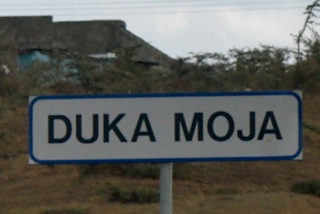Consequently, faith comes from hearing the message,
and the message is heard through the word of Christ.
(Romans 10.17, NIV)
If then I do not know the meaning of the language,
I will be to the one who speaks a barbarian,
and the one who speaks will be a barbarian to me.
(1 Corinthians 14.11, NASB)
… we hear them speaking in our own languages
about the great deeds God has done!
(Acts 2:11, NET)
I have copies of the Bible in a number of languages. French & Tok Pisin (I’ve forgotten what I knew of them), Syriac & Khasi (which I only began to learn and don’t know a bit of now), Hebrew OT & Greek NT (which I can study, but not read at speaking speed), and of course Maa. But when I really need to be fed, I pick up an English translation.
Did you know that the famous “1611” edition of the King James Version, begun in 1604 and based on the earlier 1525 edition of Tyndale’s translation, was actually not completed until 1769? Since William Tyndale began his work in 1522, that means the KJV English translation was the fruit of 244 years of translation efforts. And English speaking believers continue to produce newer translations so they can say “we read in our own language about the great deeds God has done!”
The Maa version of the Bible is much younger; it wasn’t complete until 1991. And while it is a wonderful accomplishment, it is a translation from the English Revised Standard Version (RSV), with occasional reference made to the Living Bible paraphrase. During our language learning year (2007), I would sometimes come across a passage in the Maa version that I couldn’t understand at all. So I’d ask one of the Maasai believers, “what’s this mean?” Even if I knew the basic vocabulary, I figured that the grammar was too deep for me or that it was some sort of idiom. So after reading over the verse and thinking about it for a while, my Maasai brother would answer, “I don’t know what it means, either!” Sometimes this was due to a simple translation error; sometimes it was a literal word-for-word translation of the RSV that completely lost the meaning in translation.
So a missionary colleague of mine (Paul Highfield) and I started keeping notes of verses with errors (sometimes just typos, sometimes just wrong) together with proposed corrections.
Some friends of ours, missionaries with Wycliffe Bible Translators, have begun translating the NT (from Greek) into Samburu. The Samburu language is related to Maa about the same as Spanish and Italian are related. When they were field testing the gospel of Luke, some Maasai were together with the group of Samburu. The Maasai listeners said that this new Samburu translation was easier to understand than the bible in their own language!
Earlier this year, I contacted the Bible Society of Kenya to ask about having the corrections that Paul and I are collecting considered for inclusion in the next reprint of the Maa bible. I was delighted to learn that a revision was planned! So now we are sharing what we find with the Bible Society’s committee for this project. Neither of us has time to do this full time, but it is an honor to have even a small part in helping make the scriptures available in an understandable language.
May the hearing of the Word in the heart languages of people everywhere
bring forth faith in our Lord Jesus Christ in the hearts of those who hear the Word!
..
Note (for the curious): Tok Pisin is one of the national languages of Papua New Guinea; Khasi is a language of India; Syriac is related to Hebrew and Aramaic and was as important in the history of the Church as were Greek and Latin.



